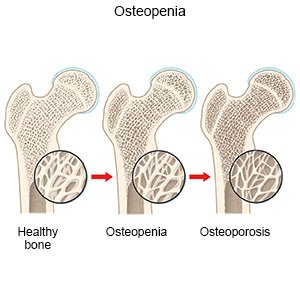Bone health is crucial for strong and supportive bodies. It’s about ensuring our bones don’t become brittle and weak. But what about things like bone density? What is osteopenia? Well, we’ll get into that. Osteopenia is like a precursor, a mild thinning of bone mass that isn’t quite osteoporosis. Basically, it’s not super serious but still something to watch. Loads of people have it and don’t even know. That’s why we need to keep an eye out and manage it early. It can prevent it from becoming full-blown osteoporosis. Now, let’s clear up some misconceptions and really understand this condition.
Identifying and Understanding Osteopenia
So, bone mineral density—what’s that, you ask? It’s essentially how packed our bones are with minerals, making them strong. Often, a DEXA scan figures that out. This scan measures bone density and shows if you have conditions like osteopenia.
People often wonder, “What age does osteopenia start?” It typically begins in middle age, but anyone at risk should be checked. At-risk groups? Mostly older adults, women especially, due to hormonal changes, and those with a family history.
You might hear people saying osteopenia is no biggie. But is it really a health concern? Imagine it as a warning sign. It’s not scary on its own but tells us to take action before things worsen.
Managing Osteopenia: Lifestyle Changes and Medical Treatments
Staying bone-healthy involves your lifestyle. It’s about eating right and staying active. Your diet? It should be jam-packed with calcium and vitamin D. Think milk, leafy greens, and even sunlight!
Exercise is key too. And hey, what is the best exercise for osteopenia? Weight-bearing activities like walking or light strength training work wonders. They help build bone strength.
But sometimes, diet and exercise might not be enough. What is the best medicine for osteopenia? Doctors might suggest medicines like bisphosphonates. They’re not for everyone but can help when necessary.
Comparing osteopenia with osteoporosis regarding treatment, osteoporosis might require more intense treatment. Usually, though, lifestyle changes are the first step for both.
Proactive Steps and Prevention
Want to keep your bones in top shape? Here’s what to do: – Eat a balanced diet brimming with calcium and vitamin D. – Exercise regularly with weight-building workouts. – Get regular screening, especially if you’re at risk.
Let’s talk genetics versus environment. Both play a role in bone health. You can’t change your genes, but you can control lifestyle choices. Supplements are a big help too. Wondering what supplements help osteopenia? Calcium and vitamin D supplements support bone health but chat with a doctor first.
Finally, take a step back and reflect, “What should I do if I have osteopenia?” Assess your personal risk, adjust your habits, and talk to your healthcare provider. Proactivity paves the way for strong and healthy bones!
Understanding all these bits helps in managing osteopenia effectively. Together, we can improve bone health awareness and stave off severe conditions like osteoporosis. Stay healthy and stay informed!

